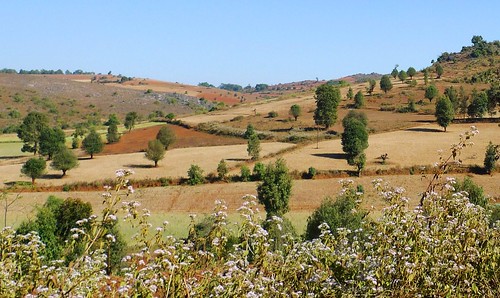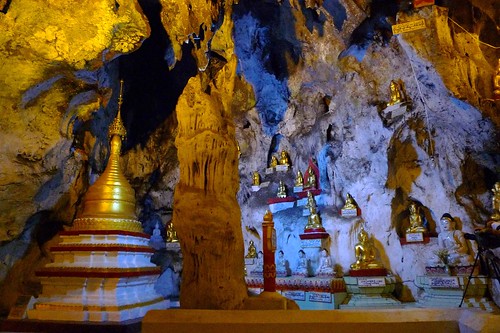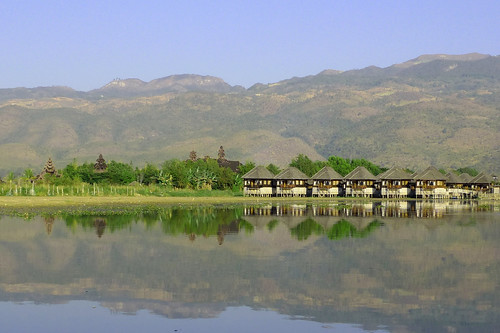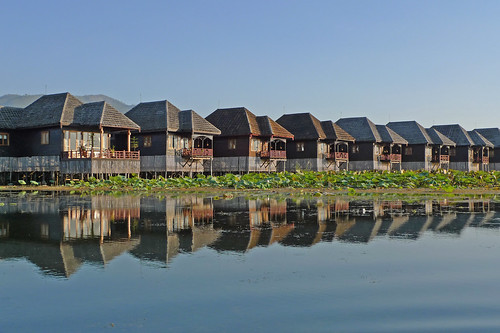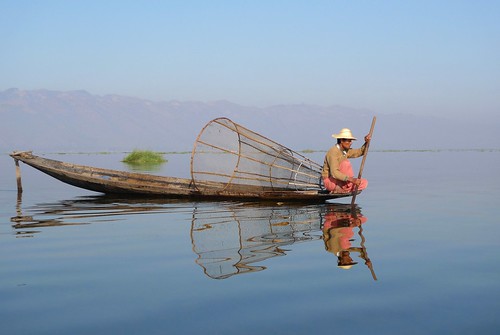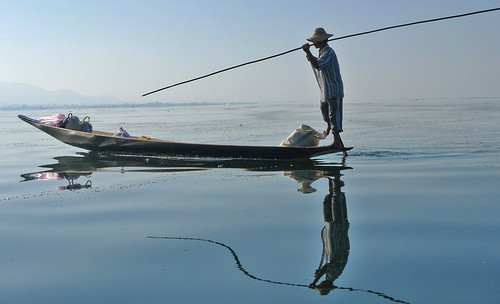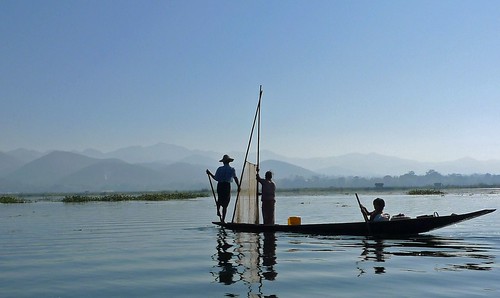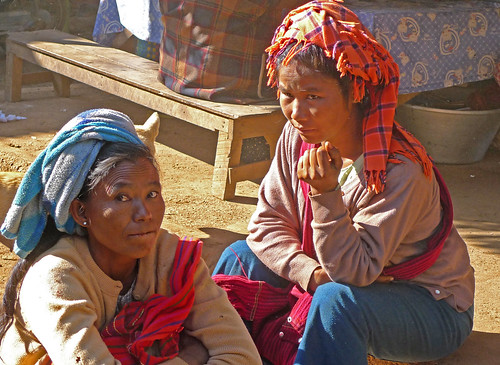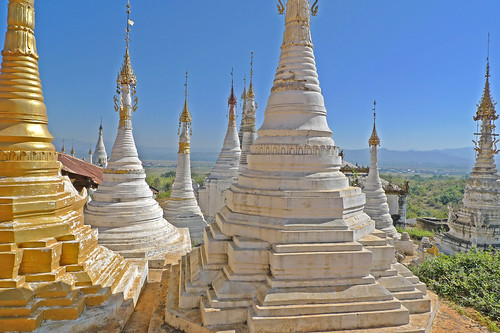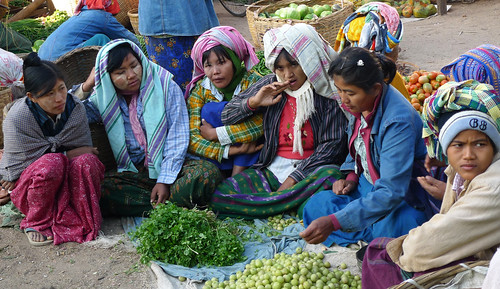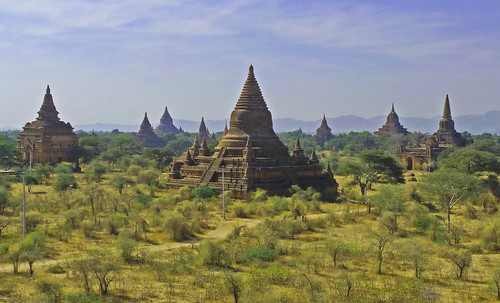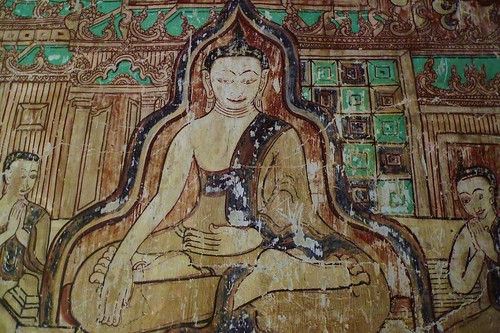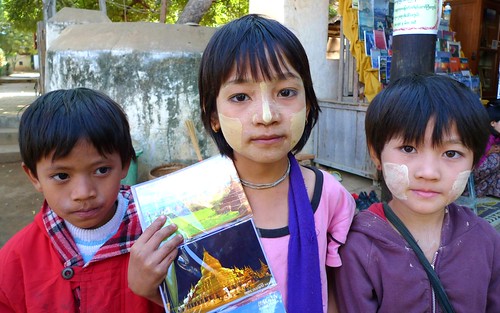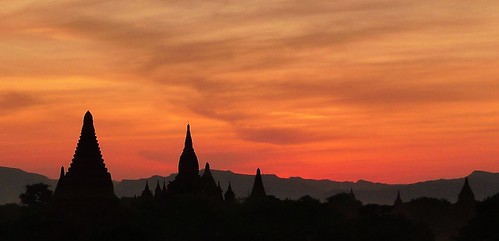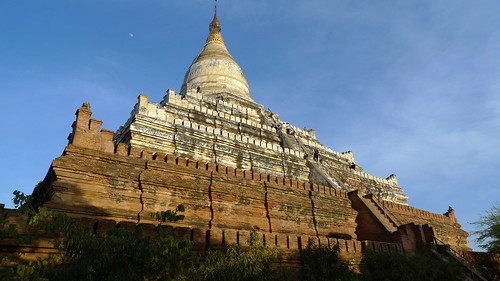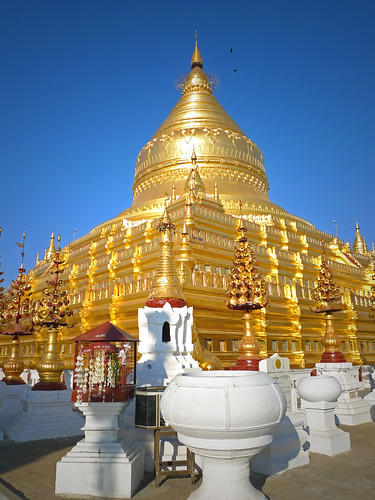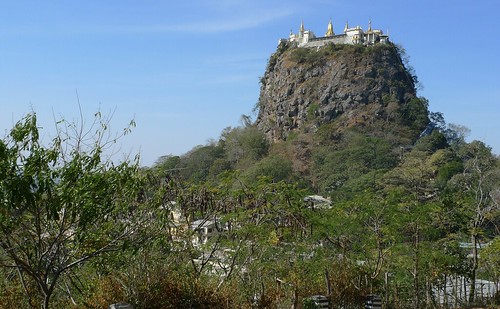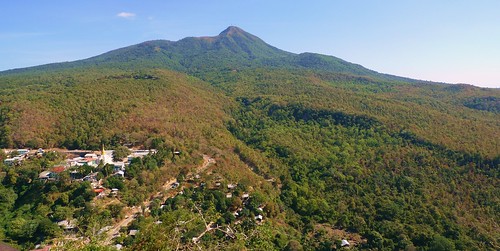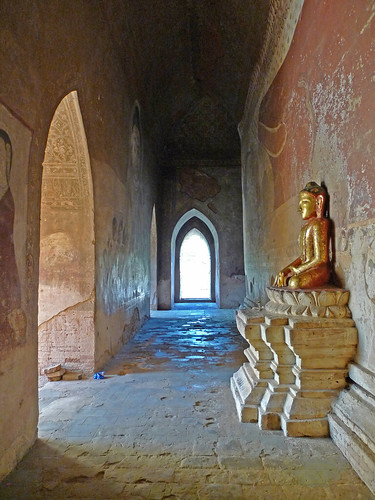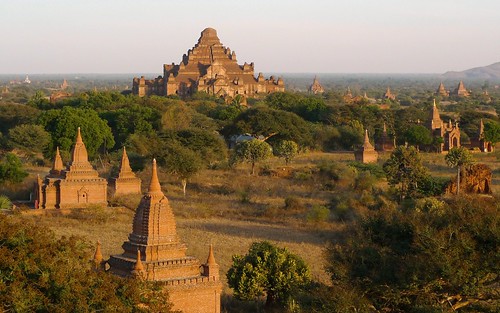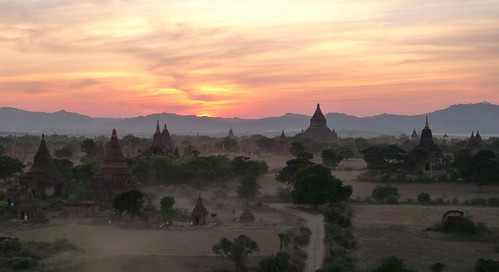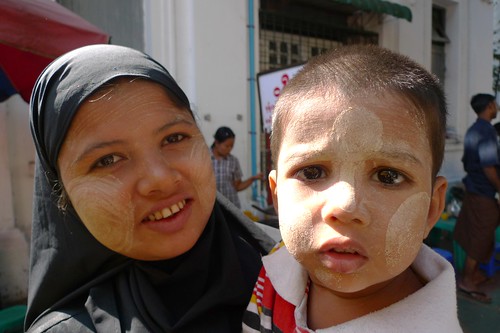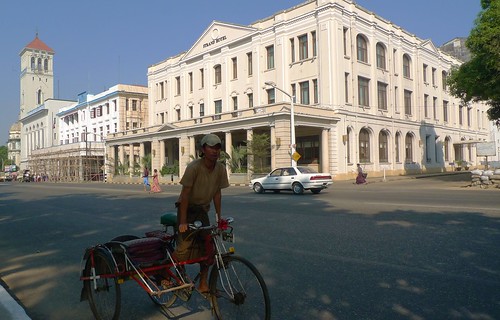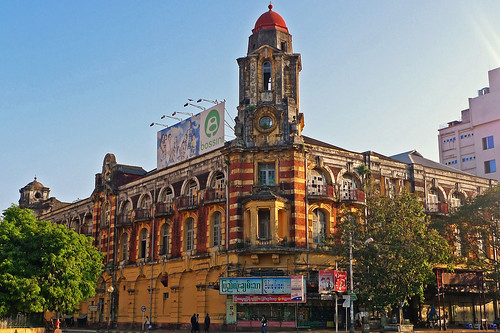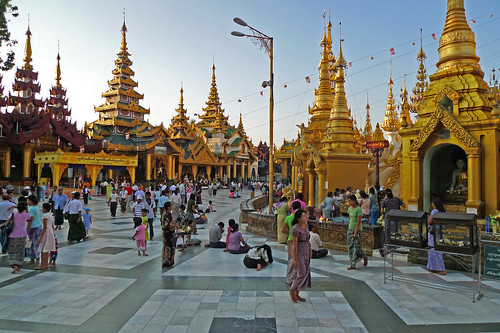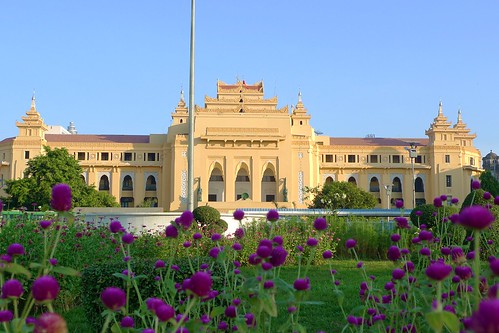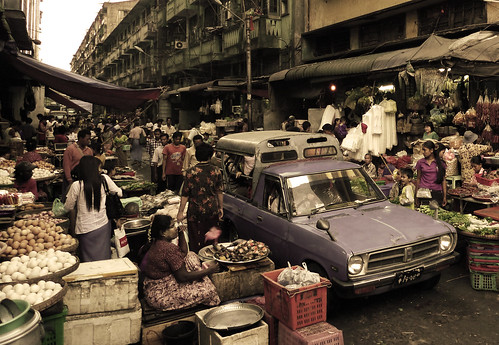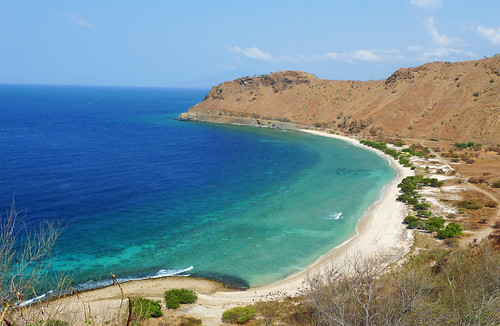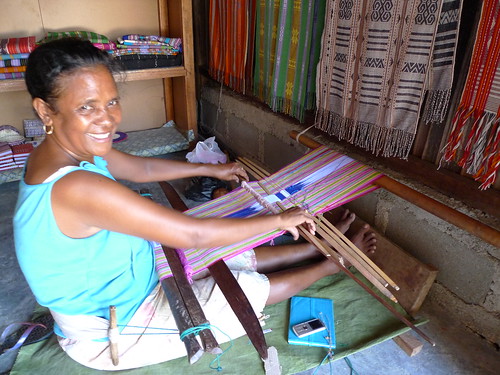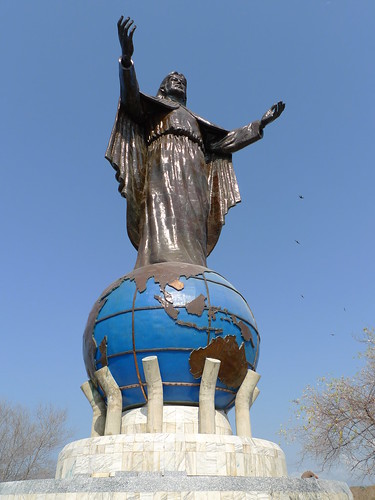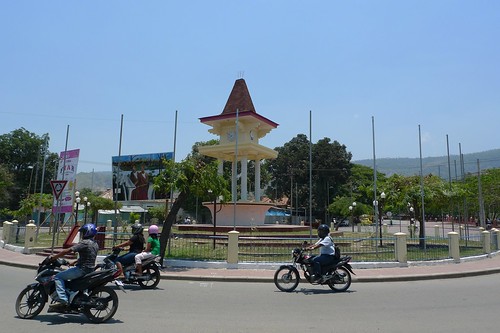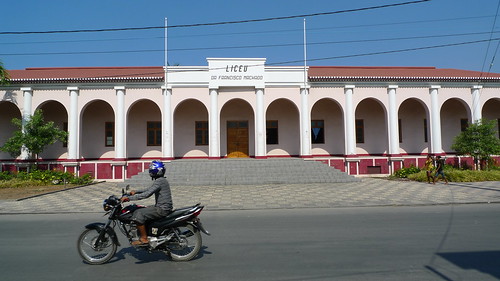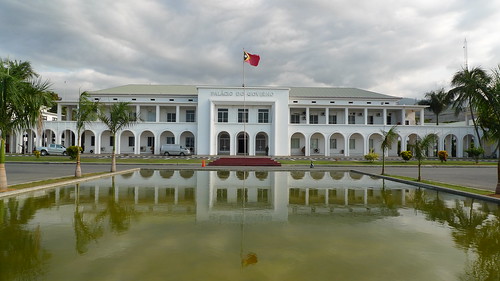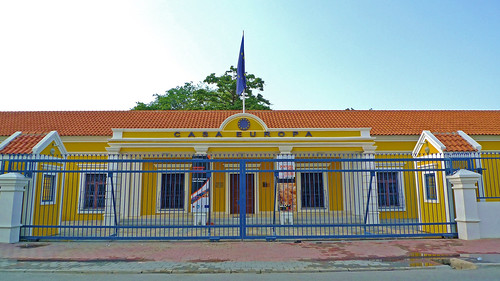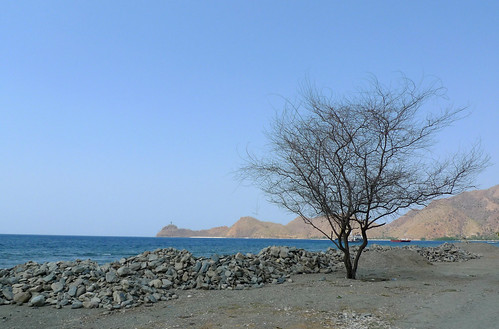The third and final leg of our trip took us to the highlands of Shan State, which is not very far from China, Laos and Thailand. Again, we boarded a short morning flight – this time to Heho. By this time, the faces we saw inside the airport were beginning to look very familiar. Many others were taking the same route that we did. The authorities seemed to be stricter this time around – and we were asked for our passports despite it being a domestic flight.
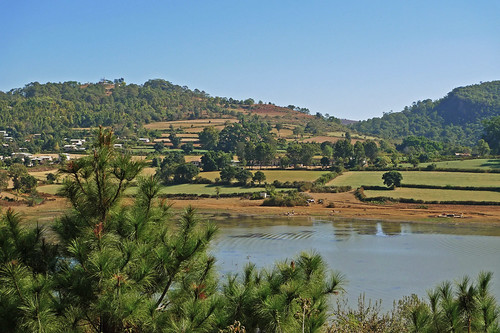
not the typical southeast asian landscape
Heho, and the surrounding areas, seemed like a different region altogether. The landscape, consisting of fields sunkissed in yellow, brown and red, seemed inconsistent with what I would typically associate with Southeast Asia. This, along with numbingly cold temperatures, made it hard for me to imagine that I was only a few dozen miles away from the punishing tropical jungles of Burma and Thailand.
inside pindaya cave
The main highlight for this third leg was Inle Lake, but we made a detour and went the other way to see Pindaya Cave. West of Heho, the cave was a labyrinth filled with thousands of Buddha images. Some parts were pitch black, and I wouldn’t be surprised if some paths actually led to a secret passageway.
From Pindaya there was also a great view of the lake and surrounding plains below. As I said earlier, it really was not the typical Southeast Asian landscape.
almost perfect reflection
inle lake
From Pindaya, it was another 2 hours drive to Inle Lake. We passed by several oxcarts and trucks cramped with people hanging onto the handles. It reminded me a bit of East Timor although the weather this time was certainly much more pleasant. We arrived in Nyaungshwe, the traditional departure point to reach the lake, in late afternoon. A $3 zone fee was collected from each of us upon entry. Our boatman was already there waiting for us at the dock- our “programme” was certainly well-arranged. Our driver left us there, promising to show up two days later to take us back to the airport.
temples on the lake
Having seen similar places before, I wasn’t all too impressed by the lake per se. The formation was a bit similar to some of the lakes in the Philippines, and many other places in Southeast Asia could offer similar views. What was more interesting about those 2 days in the lake however, was our ability to observe how the locals manage to preserve their traditional way of life. Though a lot of them have managed to find a living around the tourism industry, most of the people still work in the agricultural sector.
looking out for the morning catch
We stayed at the Myanmar Treasure Resort, one of the newer accommodation options in the Inle Lake area. Like all other “resorts” in the lake, our room consisted of a cabin on stilts – well, sort of. For about US$80 a night, we got a very spacious room that included a living area which could very well sleep up to 5.
monks
There are several interesting villages surrounding the lake, with each famous for a certain thing such as silverware, weaving, soy-based products, etc. The highlights are Indein, and Ywama. Most boatmen will take tourists to see some of these shops, where the quality is commendable. The good thing is that there is absolutely no pressure to buy – even when there’s no option for the customer to just walk out (because it’s on a lake).
village women
thaung tho kyaung stupas
Those who happen to be there during the weekend can actually catch the market gathering activities which the tribes people do during Saturdays and Sundays. On display are arrays of jewelry, knick-knacks, vegetables, spices and whatnot. It’s a good place to take interesting photos of locals who wear curiously draped headgears.
Tip: It can get extremely cold in the mornings. During the two days that we were there, temperatures reached near freezing (4 degrees celsius) in the morning. Accommodations there don’t have any heaters so warm clothing is essential!
